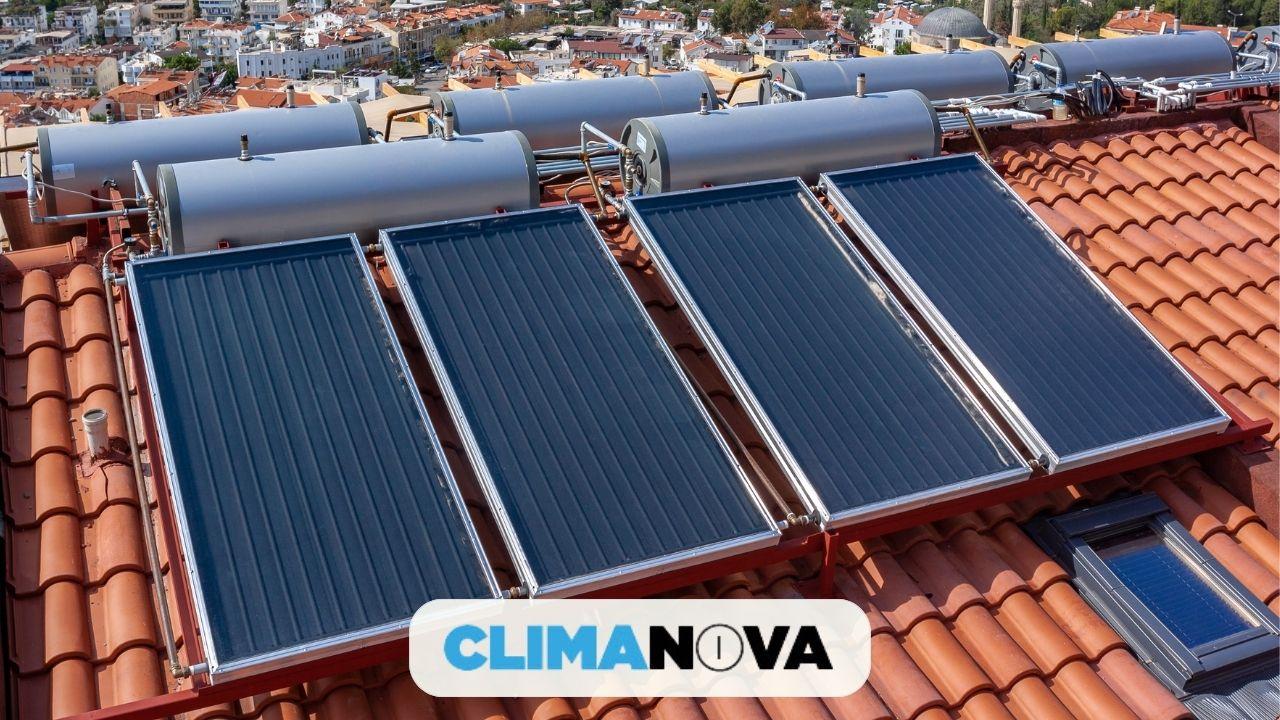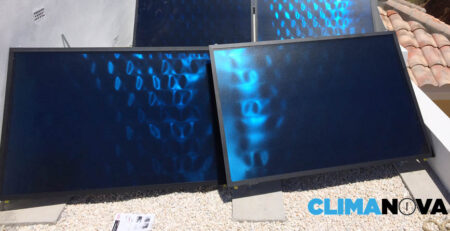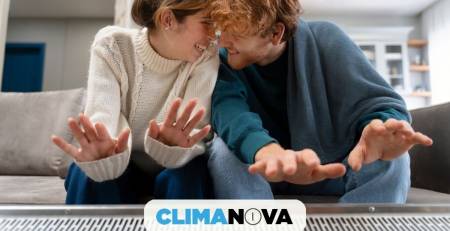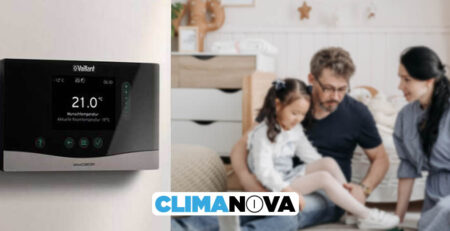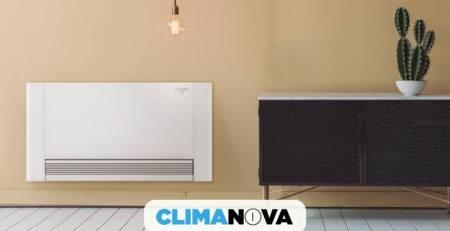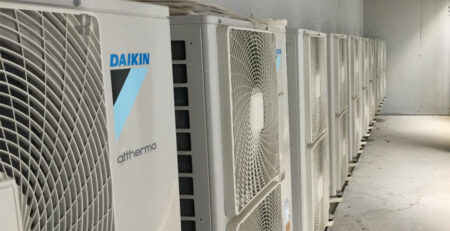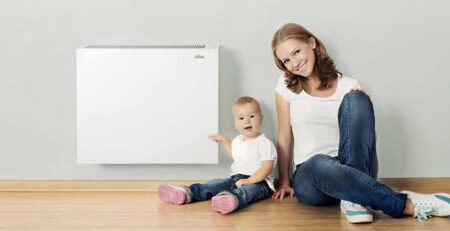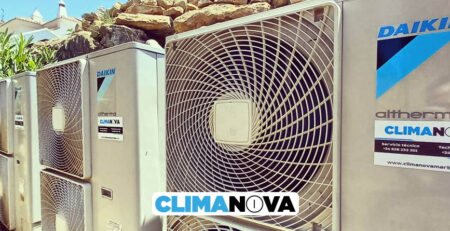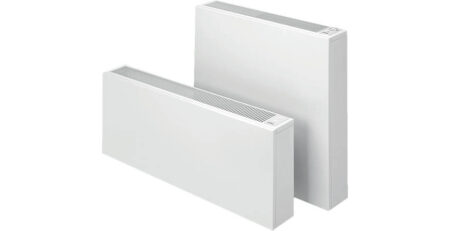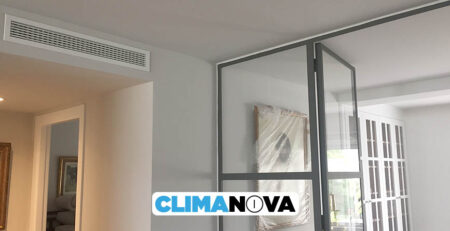Solar thermal panels provide hot water in an economical and environmentally friendly way for homes, businesses and offices. Thanks to the number of hours of sunshine we have in Malaga throughout the year, we obtain abundant energy for heating and hot water.
Solar thermal systems not only offer savings of up to 55% in gas consumption, but are also sustainable and environmentally friendly in terms of heating.
This system is particularly effective and cost-efficient for heating swimming pools. Due to its low electricity consumption, it has a quick payback time. It is no coincidence that we see solar thermal panels on many roofs in Marbella.
Given the importance of residential consumption, which accounts for 32% of global energy consumption and emits one fifth of CO2 emissions, the choice of solar energy for domestic hot water and heating is a favourable option for households.
What are solar thermal panels?
Solar thermal panels are devices designed to harness solar energy and convert it into heat. Their main applications are to provide domestic hot water and heating systems.
These solar panels are usually installed on roofs or flat roofs. With a good orientation, they absorb sunlight and convert it into heat. The heat generated is used to heat a liquid that circulates through the panels, and this hot liquid is transported to a tank where it heats the water to be used in the home for purposes such as showering, hand washing, cleaning and heating the home.
As you can see, this is a sustainable and efficient way of obtaining hot water, reducing dependence on non-renewable energy sources. In provinces like Malaga it works wonders because we have thousands of hours of sunshine every year.
Heating systems to be combined with solar panels
In the context of solar thermal, three heating systems stand out: underfloor heating, convection heaters and heat pumps.
Underfloor heating efficiently transfers heat through pipes under the floor, operating at temperatures of approximately 40°C, resulting in significant savings.
Convection heaters, although electric, integrate well with solar panels. Placed on the wall, they diffuse heat through the air. One of the best options if you want to renovate your heating system are low-temperature radiators.
Heat pumps harness the energy of the natural environment and transfer it between rooms, providing energy-efficient and energy-saving heating, cooling and DHW. Combined with solar energy, they create almost 100% renewable systems, enhancing solar heating solutions.
How solar thermal panels work
In order for you to understand how they work and to see how efficient and environmentally friendly they are, we are going to summarise in a few steps how this technology, which has been on the market for decades, works:
- Solar collection: The first step is to collect the solar energy through the panels, which contain tubes or ducts through which a carrier fluid, usually water or a mixture of water and glycol, circulates. These panels are designed to absorb solar radiation.
- Conversion to heat: When solar radiation strikes the panels, the heat is absorbed by the carrier fluid. This heat raises the temperature of the fluid with which we are going to heat the water.
- Heat transfer: The heated fluid is pumped to a storage system or heat exchanger. Here, the captured heat is transferred to the water used for heating.
- Heat distribution: The hot water generated can be used directly for radiant heating or radiators, or stored for later use.
As you can see, in four simple steps you can enjoy hot water or heating.
Important considerations
The efficiency of solar thermal panels for heating depends on several factors. Let’s take a look at the most important ones:
- Orientation and inclination: The efficiency of solar thermal panels depends on their orientation and inclination with respect to the sun. If you are in doubt, it is best to hire professionals to carry out the preliminary study and installation.
- Climatic conditions: Their performance may vary depending on the climatic conditions and the season of the year. On the Costa del Sol they tend to perform well all year round, but it is always good to analyse the environment, the local microclimate, and assess whether a back-up system is needed.
- Available space: The amount of space available on the roof or on the ground influences the capacity of the solar thermal panel installation. A small number of panels is usually not a problem, but if a large demand is required, space should be provided.
- Initial investment: Although they offer long-term savings, the initial cost of installation can be significant. However, there are often incentives and subsidies to encourage the installation of solar systems. As professionals, we can provide information and help you apply for subsidies.
How many solar panels do I need for heating and DHW?
The number of solar thermal panels you need will depend on what you plan to use the generated hot water for. If you will only use it for consumption, two standard-sized panels will cover 60-70% of the annual energy needs for a four-person household.
As for the storage tank, for a two- or three-person household, a 150-litre tank is sufficient, while a 250-litre tank will be adequate for five or six people.
If you intend to use solar thermal panels to support heating, the collector surface will depend on the size of your home. As a rule of thumb, it is estimated that 1 square metre of panels per 10 square metres of heated area will reduce heating costs by 20-35%. It is essential that the heat emission system is low temperature, such as underfloor heating, low temperature radiators or fan coils, for this estimate to be effective.
| Number of persons | Number of panels |
| 1 a 3 persons | 1 panel |
| 3 a 5 persons | 2 panels |
| 5 a 7 persons | 3 panels |
| 7 a 9 persons | 4 panels |
These are general estimates, and a personalised study is always recommended to obtain more precise data. If you are interested, do not hesitate to contact Climanova. We will be happy to help you.
The best installers of solar thermal panels
Climanova is one of the best installers of solar thermal panels in Marbella and surroundings.
If you want a quote for thermal panels for heating, contact us today. We will answer your questions and schedule an appointment to study your installation and prepare a personalised estimate.
Frequently asked questions
Here are the most frequently asked questions about this type of solar thermal system.
In Malaga, the use of solar thermal panels could reduce your heating costs by approximately 20% to 50%, taking advantage of the solar energy available in the region. However, for an accurate estimate, a customised study is recommended.
Solar thermal panels have a service life that generally ranges from 20 to 30 years. They are designed to be durable and to withstand climatic conditions. The initial investment pays for itself over the years thanks to their long-term performance.
In general, solar thermal systems are generally reliable, but some users opt for a backup, such as a conventional heating system, to ensure supply on cloudy days or in adverse conditions. When we assess your specific needs, we can determine if a backup system is appropriate for you.
Solar thermal panels do not require a lot of maintenance, but it is important to carry out regular checks. The system should be kept clean to ensure optimum performance, and connections and components should be checked. It is also advisable to carry out annual inspections of the storage tank, check the condition of the insulating rubbers and examine the structure for possible damage. With regular maintenance, solar thermal panels can operate efficiently for many decades.
Yes, it is possible to integrate solar thermal panels with your existing heating system. Solar thermal systems are compatible with different types of heating systems, such as underfloor heating, low temperature radiators and fan coils. By using solar energy to heat water, you can significantly reduce the workload of your conventional heating system, resulting in energy and cost savings.
